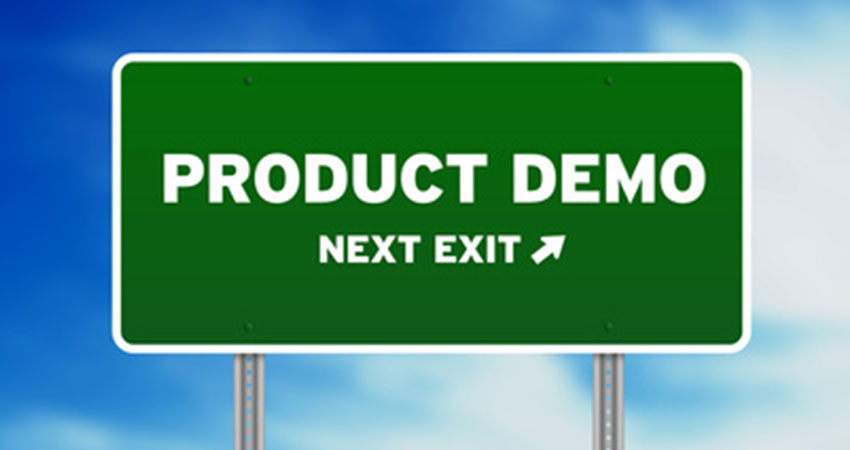Vendor demos are at the heart of selecting the right warehouse management system (WMS) for your business. Having been part of hundreds of demos over 33 years, we find that how well prepared your company is in advance makes all the difference in selecting the right WMS. Detailed preparation upfront will save time for your users and the vendors as well.
There is a huge difference between what we call a “look/see” or qualifying demo and one to select a finalist. Many companies use a the former to come up with a short list of vendors to do the deep dive with; it may last a couple hours and be remote. Unfortunately, some try to select the best finalist without a detailed investigation which can take one or two days.
In the end you’ll spend time going back and forth for answers and have a hard time getting an apples-to-apples comparison. Also, some vendors are trying to avoid on-site visits which can greatly reduce your ability to understand their system.
Here are 11 ways to be better prepared and get more out of your vendor demonstrations:
Take Control of the Demo
Our recommendation is for you to take charge of the demo. This will focus the vendors’ efforts and let you see the system more completely. Ideally the detailed demos take place with the two or three vendors selected after reviewing RFPs and pricing that best meet your company’s needs and financial commitment. As a starting point, the RFP responses include some material to be covered. Your project manager for the selection and implementation should coordinate the preparation, demonstrations and vendor visits.
Follow the Process Flow
It’s our recommendation to follow the process flow for the following areas:
- Creating master file set ups
- ASNs and EDI, if used
- Receiving
- Quality assurance
- Put away
- Replenishment
- Pick/pack/ship/manifesting
- Returns processing
- DC inventory management
Keep separate any detailed discussions of devices to not get side tracked. Doing master files at the beginning will let people understand the data the vendor system has and requires. One thing we’ve found is that demos often get bogged down and you realize it takes much longer to go through all the steps. Early on, let the vendor show you the steps without any questions and interruptions. Then go back and do the deep dive.
Create Demo Scripts
Part of taking control of the process is to get the vendor to demo the entire system with your company’s sample data. To do this, prepare scripts of the key processes, including building master product files, as well as on purchase orders, receiving, put away, picking, packing and shipping, returns, etc. The scripts should be prepared by department managers responsible for these areas, helping you gain buy-in from the beginning.
Send Advanced Prep to Vendor
What materials can you send in advance to better prepare the vendor for your demonstration? Examples include scripts, company data, current system flows, receiving work sheet, master file layouts, pick ticket layouts and the agenda with topics and time slots. Get the vendor to agree to the agenda before the visit. Send them the materials at least two weeks before their presentation to give them enough time to prepare and ask questions. If you have multiple fulfillment centers, are there differences in product, process or systems employed?
The Walk Through
Let the WMS vendor observe order processing during a regular shift, not after hours. It will help them fine tune their presentation, highlight the benefits and note the changes required.
Limit Selling Time
Limit the introductory portion, including background on their product, at one hour or less. Keep the focus on WMS product demonstration in a logical fashion, not on selling. They were selected because they’re on the short list – have them simply show you the details you asked for.
Whiteboard Items to Address Later
An important point discussed at the wrong time may get the demo off track. The project manager should maintain control and whiteboard items that are out of sequence for further discussion.
Who is the Scribe?
It is extremely important to have a knowledgeable user appointed as the note taker to document the outcome and follow-up items. Many companies are less than diligent at these types of tasks. This will help the project manager keep focused on the demo and users can more easily get their questions answered.
Demo Current Version
It’s important for the vendor to demo with the current WMS version. A future version may be released without certain functions and may contain program errors that have not yet been resolved. Also, are there requirements you’re asking for that have to be modifications? Is there functionality you require that are third-party add-ons from other vendors? If so, they should be part of the preparation and the demo.
Interfaces and Integrations
At some point you’ll want to discuss in detail the data exchanged between order management, ERP systems and third-party interfaces, shipping systems, labor management, transportation management and EDI integration. These are detailed conversations that can take days by themselves. These are best discussed with IT at another time. For the purposes of the demo find a way to summarize the data exchange and avoid getting off track.
Written Agenda
With all this prep done you can now prepare a written, timed-out agenda including topics to be discussed. You can invite department leads to hear the company and system introduction and learn about master files, then have them come back later to see the detailed processes they’re responsible for.
Detailed preparation and orchestrating a complete view of the vendor’s systems is at the heart of selecting the right system for your business.
Brian Barry is president of F. Curtis Barry & Company

